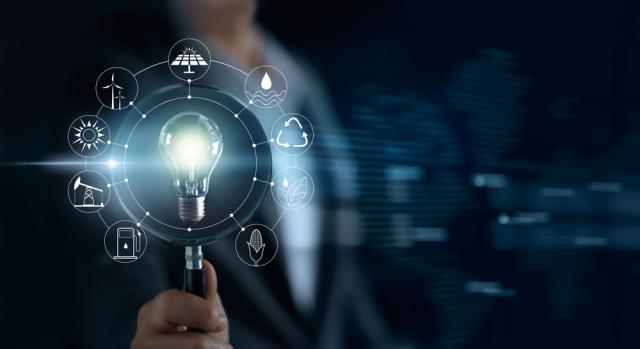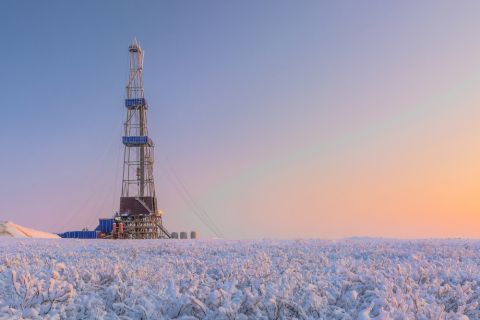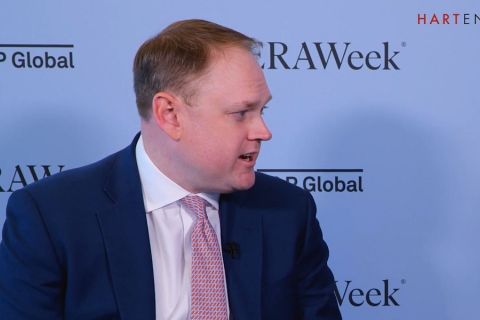
Source: Shutterstock.com
HOUSTON—There is a major inflection point facing the energy industry, bringing with it plenty of challenges that require preparation and new ways of thinking to uncover solutions.
This, according to BP’s Ryan Malone, could impact how business is conducted and shift conversations happening today among industry players. And he predicts that change could arrive within five years, meaning today’s workers—not future generations—will be charged with collaborating to solve challenges.
As chief transformation officer for BP’s Gulf of Mexico (GoM) and Canadian operations, a role he carries alongside general manager of projects, Malone is tasked with helping the business bring in more cash flow. “But it’s also more importantly about positioning the company and the business for the transformation that I think is not only underfoot—if you feel the rumblings heading our way,” but have already arrived in certain parts of the world for the industry, he told attendees of Teledyne Marine’s Technology Focus Day on Nov. 20.
Some might already be “behind the eight ball.”
The words were delivered as companies address lackluster returns and seek out more capital and operational efficiencies today, while watching for whatever changes may come their way as parts of the world embraces cleaner forms of energy.
Among the tasks is what Malone called the “dual challenge” of supplying more energy while reducing emissions. The U.S. may be somewhat isolated from global dialogues taking place, but “I think it’s right on our doorstep” regardless of which direction global energy demand swings.
Malone pointed out that the world’s population has jumped to about 7 billion from 5 billion within the past 30 years and expectations are the count will grow by 2 billion over the next 20 years. The surge has come alongside a rise in GDP to about $70 trillion from $20 trillion with poverty cut in half.
More energy will be needed.
“We recognize that there’s unsustainable levels of emissions in the atmosphere right now. Our outlook estimates that carbon emissions are going to rise by 10% to 2040,” Malone said. BP aims to reduce its carbon footprint by roughly 3.5 million tons by 2025. “It’s essentially the elimination of the carbon footprint of two of our major operating regions within the next five years.”
The company aims to find more ways to produce energy more sustainably, while adding value. Within six to 12 months, he said he predicts carbon footprints will be a key metric in evaluating capital investments for BP.
On another front, millennials are expected to make up 75% of the workforce within five years—up from 35% today—and this, he said, could reshape how the industry interacts with a digital world, considering this generation is mostly seen as being digital subscribers.
He encouraged attendees to prepare for the mindset shift and different ways of working.
BP, like some of its peers, have embraced digital technologies.
“We outsourced an entire segment of our company with venture capital funded by BP to form a virtual shark tank,” Malone said.
Earlier this year BP Ventures invested $5 million in Houston startup Belmont Technology to boost BP’s artificial intelligence (AI) capabilities. The company has developed an AI program that will allow BP to interconnect its reservoir data globally, creating what BP called a “robust knowledge-graph of subsurface assets” with data that its experts interpret, analyze and perform rapid simulations.
Speaking generally on digital, Malone said “There’s going to be more interconnectivity and connection points. The data lakes are going to be getting bigger and the navigation streams for how to take that data out of those lakes and make it into something useful is just going to get more complex.”
Also changing will be how energy companies interact with the supply chain and standardization. BP, he said, mostly buys stock components—like subsea trees—off the shelf, making needed modifications and weighing any risks.
But eventually, Malone added, the industry will reach a stopping point on standardization at the component level, and more “collaboration” will be needed. Historically, the industry has not standardized around collaboration.
“It pits operators against suppliers, suppliers against each other. It forces conversations that are not helpful. It keeps operators from asking what we really want,” he said, encouraging more dialogue.
The pathway forward likely won’t be linear, according to Malone. No one knows what the future will bring. But it will take a collective power and the ability to adjust agilely to prepare for challenges and change ahead.
What isn’t changing, however, is BP’s commitment to the U.S. and the GoM, he said.
RELATED
- Seismic, Supercomputing Power Leads BP To More GoM Resources
- BP Green Lights $1.3 Billion GoM Project
“We still need a lot of oil. We still need a lot of gas,” Malone said, “but we’re going to need a lot more on the technology front and a lot more on the carbon reduction front.”
In the past five years, BP has grown its GoM production by nearly 60% to more than 315,000 barrels per day (bbl/d). The company forecasts production will reach 500,000 bbl/d within the next five to 10 years. It is deploying technology and carrying out intervention, infill and infrastructure-led exploration programs, exploring Paleogene, Cretaceous and Jurassic reservoirs that could lead to new hubs.
“By the end of next year, we’re hoping to add upwards of 100,000 barrels a day of additional oil at [the] Thunder Horse [platform],” Malone said. Additional barrels are also expected when the $1.3 billion Atlantis Phase 3 development comes onstream in mid-2020.
Recommended Reading
Exclusive: ‘Regulatory Tsunami’ a Top Priority for American Producers, Says AXPC’s Bradbury
2024-04-22 - Regulatory considerations have significant implications for how oil and gas companies evaluate risk, and it’s a top priority for American energy producers right now, said American Exploration & Production Council CEO Anne Bradbury at CERAWeek by S&P Global.
Biden Administration Criticized for Limits to Arctic Oil, Gas Drilling
2024-04-19 - The Bureau of Land Management is limiting new oil and gas leasing in the Arctic and also shut down a road proposal for industrial mining purposes.
Exclusive: The Politics, Realities and Benefits of Natural Gas
2024-04-19 - Replacing just 5% of coal-fired power plants with U.S. LNG — even at average methane and greenhouse-gas emissions intensity — could reduce energy sector emissions by 30% globally, says Chris Treanor, PAGE Coalition executive director.
Renewed US Sanctions to Complicate Venezuelan Oil Sales, Not Stop Them
2024-04-19 - Venezuela’s oil exports to world markets will not stop, despite reimposed sanctions by Washington, and will likely continue to flow with the help of Iran—as well as China and Russia.





